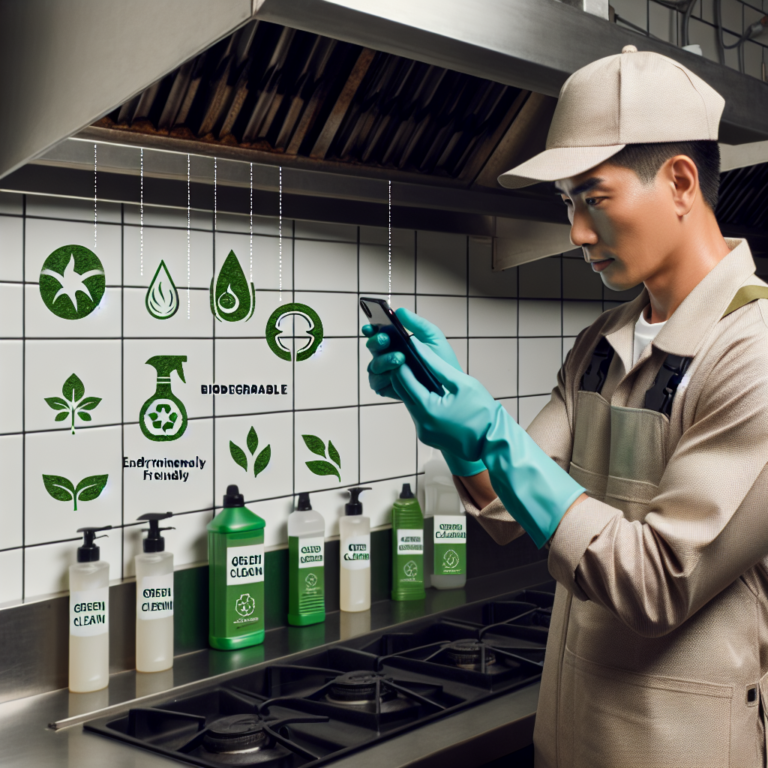Prevent Kitchen Fires with Routine Hood Cleaning for Safety
Understanding the Importance of Hood Cleaning
In the bustling chaos of a commercial kitchen, there are numerous factors to consider when ensuring things run smoothly and safely. Among these, hood cleaning stands out not merely as a routine chore but as a critical component of kitchen safety. Think of it as your kitchen’s silent hero, tirelessly working behind the scenes to keep fires at bay.
The Role of Kitchen Hoods
Before diving into the specifics of restaurant hood cleaning, it’s important to understand the function of kitchen hoods. These hoods are designed to capture smoke, grease, and other airborne particles that are by-products of cooking. They funnel these materials away from the kitchen space to ensure the air remains breathable and free of contaminants.
Why Grease Buildup is Dangerous
Grease is, unfortunately, an inevitable consequence of cooking. As it accumulates on surfaces, especially within the nooks and crannies of an exhaust system, it becomes a significant fire hazard. Once a flash fire occurs, it can spread rapidly through the grease-laden ducts, making it difficult to control. This is where regular exhaust hood cleaning becomes critical.
Benefits of Regular Hood Cleaning
- Fire Risk Reduction: Consistent commercial kitchen hood cleaning minimizes grease buildup, significantly reducing the chances of a fire.
- Enhanced Air Quality: Clean hoods improve air ventilation, ensuring that the kitchen remains a comfortable space for chefs and staff to work.
- Compliance and Inspection: Meeting health and safety regulations is crucial for any restaurant. Regular maintenance ensures you are always inspection-ready.
- Extended Equipment Lifespan: Regularly cleaned hoods operate more efficiently and last longer, protecting your investment.
Hood Cleaning Process Explained
So, what does the hood cleaning process involve? It is more than just a wipe-down; it requires a methodical approach to ensure every part of the system is free of grime and grease.
Key Steps in Hood Cleaning
- Inspection: A thorough assessment is conducted to determine the extent of grease buildup and identify any potential issues.
- Setup: Protective coverings are placed on cooking equipment and flooring to prevent damage during the cleaning process.
- Detachment and Cleaning: Hood components, including filters and grease traps, are removed and cleaned using industrial-strength degreasers.
- Duct and Fan Cleaning: Ducts and fans are often the most challenging to clean. They require special tools and sometimes even chemical treatments to break down grease deposits.
- Final Inspection and Polishing: Once cleaned, the equipment is reassembled, inspected, and polished to ensure everything is in optimum working order.
Professional Hood Cleaning Services in New Jersey
Opting for professional cleaning services ensures a comprehensive job, using specialized tools and expertise that might be beyond the capabilities of a restaurant staff. In New Jersey, particularly in areas like Toms River NJ, businesses like Jersey Hood Cleaning have a proven track record in delivering top-notch cleaning services that exceed safety and hygiene standards.
Investing in Safety: A Worthwhile Endeavor
The investment in regular hood cleaning is indeed a small price to pay compared to the devastating potential of a kitchen fire. Furthermore, it aids in compliance with regulations, helping restaurant owners avoid hefty fines and ensuring continuous operation without safety-related disruptions.
Conclusion
In conclusion, the meticulous process of restaurant hood cleaning not only enhances the safety and efficiency of your kitchen but also sustains the livelihood of countless business owners. For any New Jersey restaurant nestled in the scenic locales like Toms River NJ, partnering with experts such as Jersey Hood Cleaning can profoundly impact your kitchen’s safety narrative, transforming a potential fire hazard into a robust defense mechanism.







